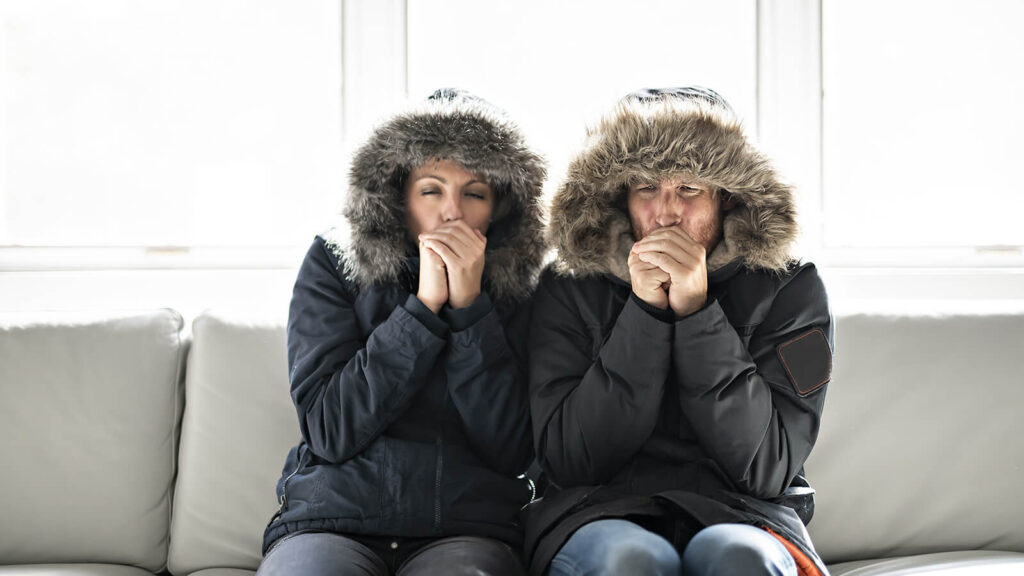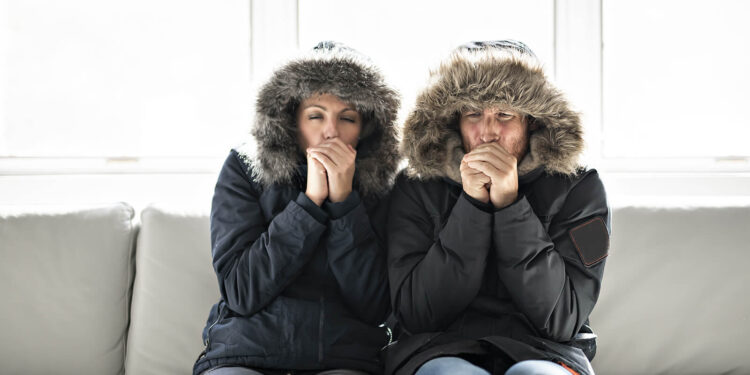Winter weather can bring extreme temperatures, and if your furnace is not working properly, it can make the cold even more unbearable. One of the most common problems a homeowner experiences during the winter is a malfunctioning furnace. Knowing the signs that your furnace is going out is an essential part of making sure your home stays warm and comfortable. This article will cover some of the indicators that can help you determine if it’s time to get a new furnace.
Common Symptoms
When the temperatures start to drop, you rely on your furnace to keep your home warm and comfortable. But what happens if it stops working? Knowing the signs that your furnace is going out can help you identify the issue before it becomes a major problem.
Common signs that your furnace is failing include no heat, strange noises coming from the unit, and an unusually high energy bill. If you notice any of these symptoms, it’s important to call in a professional right away for repair or replacement services. Ignoring these issues can lead to costly repairs down the road and put you at risk of having no heat when temperatures dip below freezing.
A qualified HVAC technician will be able to evaluate your system and provide advice on how best to resolve any issues you may be facing with your furnace.
Carbon Monoxide Warning
Carbon Monoxide Warning – Knowing the Signs that Your Furnace is Going Out. As winter approaches, it’s important to be alert for any signs your furnace may be going out and producing carbon monoxide. Carbon monoxide is an odorless and colorless gas that can be deadly if not detected in time. If you suspect your furnace is producing carbon monoxide, take immediate action to prevent harm to yourself or others in the home. Pay close attention to these warning signs of a malfunctioning furnace: lingering odors, yellow or brown staining on walls near furnaces, increased condensation on windows, rusting flue pipes or vents, and sooty build-up around the fireplace and chimney area. Here is Twin City Heating, Air and Electric to answer your questions on furnaces, and to install a new one for you.
Unusual Smells and Odors
When it comes to furnaces, unusual smells and odors can be a sign of trouble. If you smell something strange coming from your furnace, it’s important to take action quickly in order to avoid any potential damage or safety issues. Unusual smells may include burning rubber, electrical wiring, oil, and smoke. Any of these scents should be taken seriously and should be addressed as soon as possible.

If the odor is particularly strong or persistent, you may want to contact an HVAC professional for help diagnosing the problem. An experienced professional can determine whether there is a serious issue with your furnace that needs immediate attention. They can also recommend any necessary repairs or replacements that need to be made in order to restore your furnace back to proper working condition.
Short Cycling
Short cycling is a common issue that heating systems can experience, and it’s an important one to be aware of. Short cycling occurs when your furnace turns on and off repeatedly, cutting short its normal run cycle. This can cause a range of problems for your furnace, ranging from inefficient operation to potentially causing permanent damage. Knowing the signs of short cycling will help you identify if it’s time for a new furnace before any serious damage occurs.
When short cycling becomes an issue with your furnace, there is often more than just wasting energy at stake. If left unchecked, short cycling can cause expensive repairs or even require replacing the entire unit sooner than expected. Common signs that indicate your system may be experiencing this problem include frequent restarts in a single hour and temperatures not reaching the thermostat setting during normal run cycles.
Ductwork Leaks and Issues
When it comes to diagnosing furnace problems, one of the most common causes is ductwork leaks and issues. As an integral part of your home’s heating system, it’s important to be aware of potential signs that indicate a problem with your ducts. Ducts are responsible for distributing heated air throughout your home, so if they become compromised due to tears or punctures in the material, you may experience a decrease in flow or feel cold drafts coming from areas such as wall registers. In addition, dust and debris particles can make their way into the system through small openings in the ductwork which can lead to poor indoor air quality and cause additional strain on your heater. To prevent these issues from occurring, have your ducts regularly inspected by a furnace repair blain technician who can identify any existing problems and provide necessary repairs.
Conclusion
The conclusion to the article, “What are signs that your furnace is going out?”, is troubleshooting. Knowing what signs to look for can help you determine if there is a problem with your furnace and how urgently it needs repairs or replacement. To start troubleshooting, begin by checking the thermostat and resetting it as needed. If this doesn’t help, check the air filter and make sure it isn’t clogged or dirty. If the air filter seems fine, then test the blower fan motor to see if it’s working properly. If all of these elements seem to be functioning correctly but your home isn’t heating up enough, you may need to take a closer look at the components involved in combustion–like gas valves or flame sensors–which could indicate potential problems that require professional attention.






